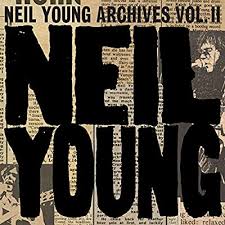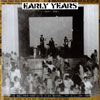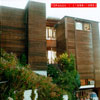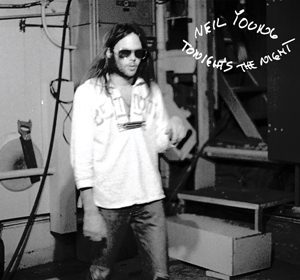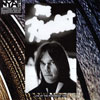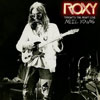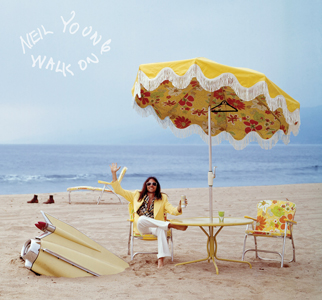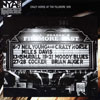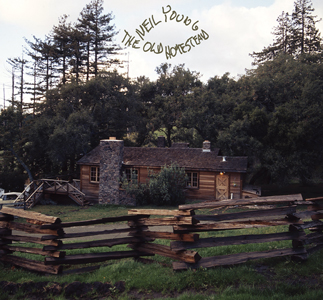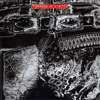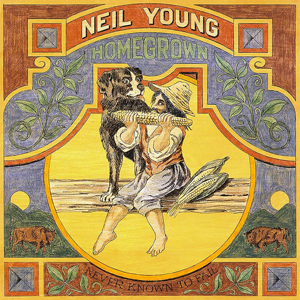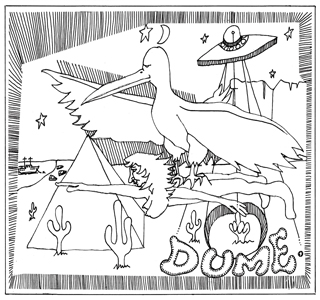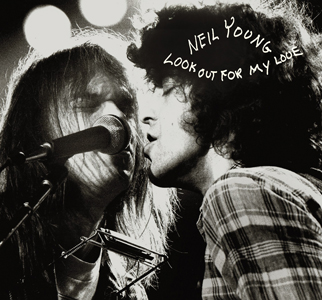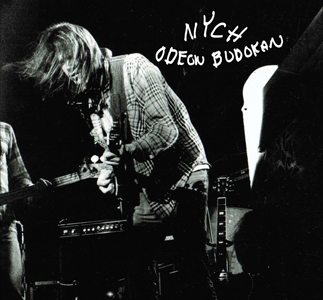NEIL YOUNG : ARCHIVES VOL. II (1972-1976)
Label : Reprise
Release Date : November 20, 2020
Review (Wikipedia) : Neil Young Archives Volume II: 1972-1976 is a 10-CD box set from American-Canadian folk rock musician Neil Young that was initially released in a limited deluxe box set (and streaming on the Neil Young Archives site) on November 20, 2020. The release is the second box set in his Neil Young Archives series, following 2009's The Archives Vol. 1 1963-1972, and covers a three-and-a-half-year period from 1972-1976. The track list was officially announced on the Neil Young Archives site on September 20, 2020, with the first single, "Come Along and Say You Will", being posted to the site as the Song of the Day on October 14. The set then went up for pre-order on October 16, 2020 as an exclusive release to his online store, with only 3,000 copies being initially made available worldwide.[10] After selling out the following day, Young announced several weeks later that a general retail version, as well as a second pressing of the deluxe box set, is expected to be released to market on March 5th, 2021. This was followed by the release of a second single, "Homefires", on October 21, and a third, an alternate version of "Powderfinger", on November 3. Of the 131 tracks on the track listing, 63 are previously unreleased. These include live and alternate versions of previously released songs. Twelve of the songs on this set have never been released in any form.
Disc 1 : EVERYBODY'S ALONE (1972 - 1973)
- Letter From 'Nam
- Monday Morning
- The Bridge
- Time Fades Away
- Come Along and Say You Will
- Goodbye Christmas on the Shore
- Last Trip to Tulsa
- The Loner
- Sweet Joni
- Yonder Stands the Sinner
- L.A. (Story)
- LA.
- Human Highway
Length : 46:26
Disc 2 : TUSCALOOSA (1973)
- Here We Are In The Years
- After The Gold Rush
- Out On The Weekend
- Harvest
- Old Man
- Heart Of Gold
- Time Fades Away
- Lookout Joe
- New Mama
- Alabama
- Don’t Be Denied
Length : 52:29
Venue : University of Alabama, Tuscaloosa, Alabama, USA
Recording Date : February 5th, 1973
Review (AllMusic) : Neil Young's muse has led him to release some curious albums over the course of his five-decade career, but he has a more contentious relationship with 1973's Time Fades Away than any other title in his catalog. Time Fades Away was a live LP assembled from several shows on his early 1973 tour following the breakout success of Harvest, which he undertook shortly after the death of Crazy Horse guitarist Danny Whitten. Young was still wrestling with his grief over Whitten's passing, and his relationship with his band of the time, the Stray Gators, was not especially good (in part due to the high salary drummer Kenny Buttrey demanded, which Young then had to pay the other musicians as well). Young's public statements about the tour and Time Fades Away have been consistently bitter, which is reflected in the dark, chaotic sound of the album. For decades, it was one of Young's few releases to fall out of print and remain that way, and it's still not available as a stand-alone CD. (It does appear in the Official Release Series, Discs 5-8 box set). However, the 2019 release of the archival live album Tuscaloosa puts this tour in a new light. It preserves a February 1973 date with the Stray Gators at the University of Alabama in Tuscaloosa, and rather than a rumbling hot-rod ride down a bumpy road of bad karma, Tuscaloosa presents Neil and his band in a warmer mood, sometimes downbeat but far less confrontational, and the vibe here is generally positive. Some of this can be chalked up to the set list; Time Fades Away featured only previously unrecorded tunes the audience didn't know, while this show included five tunes from Harvest and one each from After the Gold Rush and Neil Young. The crowd seems happy to hear familiar sounds (even "Alabama," which one might imagine would rub some Crimson Tide fans the wrong way), and while the set takes a sharp left turn into rougher territory at the halfway point with "Time Fades Away," the performance is significantly more energetic than the previously released version, enlivened by the pedal steel whoops of Ben Keith, making it a bit more user friendly. Tuscaloosa also includes early performances of two songs that would later surface on 1975's Tonight's the Night, and on this evening, Neil and his accompanists gave "Lookout Joe" a ragged but controlled feel that matched grief with power and made the most of both. It would be wrong to look at Tuscaloosa as the flip side of Time Fades Away, as in its own way, it's also an album that confronts grief and emotional struggle. The difference is, on Time Fades Away, those emotions were presented loud and clear. Tuscaloosa is warmer, more engaging, and captures Young and the Stray Gators on a great night (and boasts a cleaner recording and mix), but even in the cheeriest bits, there's a dark shadow in this music that's subtle but eloquent. Time Fades Away was the drunken wake and Tuscaloosa is the family's memorial service -- and they're both important parts of the story of Neil Young in 1973.
Disc 3 : TONIGHT'S THE NIGHT (1973)
- Speakin' Out Jam
- Everybody's Alone
- Tired Eyes
- Tonight's the Night
- Mellow My Mind
- World on a String
- Speakin' Out
- Raised on Robbery (Joni Mitchell)
- Roll Another Number
- New Mama
- Albuquerque
- Tonight's the Night Part II
Length : 45:56
Disc 4 : ROXY - TONIGHT'S THE NIGHT LIVE (1973)
- Intro
- Tonight's The Night
- Roll Out The Barrel
- Mellow My Mind
- World On A String
- Band Intro
- Speakin' Out
- Candy Bar Rap
- Albuquerque
- Perry Como Rap
- New Mama
- David Geffen Rap
- Roll Another Number (For The Road)
- Candy Bar 2 Rap
- Tired Eyes
- Tonight's The Night - Part II
- Walk On
- Outro
Recording Date : September 21 & 22, 1973
Venue : The Roxy, Los Angeles, California, USA
Length : 52:59
Review (AllMusic) : Compiled from a series of gigs in September 1973, Roxy: Tonight's the Night Live captures Neil Young & the Santa Monica Flyers just after they recorded the epochal Tonight's the Night. It would be another two years before Tonight's the Night hit the stores, the label sitting on the record because it was too dark and murky. On-stage, these same songs straighten themselves out and, in the process, get a touch lighter. On Tonight's the Night, it often appeared as if Young and his crew learned the songs as they recorded them, but on Roxy, the Santa Monica Flyers have the changes under their belts and are really in the mood to have a good time. For anybody who has bought into the dark mythos surrounding Tonight's the Night, it's startling to hear Neil and his band joking around on-stage and treating this as an Irish wake, not an occasion for mourning. As such, it's almost a necessary addendum to Tonight's the Night, since it illustrates how Young's music continually evolved.
Review (Pitchfork) : In 1973, Neil Young played the inaugural show at the Los Angeles club, The Roxy. The reissued recording captures a night that turned his famously bracing album into something warmer and vibrant. Walk the city blocks of Los Angeles and imagine its bohemian yesteryear, when strung-out sex parties and impromptu jamborees emanated from the storefronts and bungalows. Neil Young’s foothold in the musician circles of Topanga, Laurel Canyon, and Hollywood are well documented. Further proof of his contribution to the cultural fabric of Los Angeles is that he consecrated some of the city’s most celebrated clubs. A new reissue of live performances from his celebrated diamond in the rough, Tonight’s The Night—released in conjunction with Record Store Day—aims to recapture the intrigue tied up with Young’s tenure in L.A. in the early 1970s. When the now-famous nightclub The Roxy flung open its doors in West Hollywood in September 1973, Young and his band, the Santa Monica Flyers, were invited to be its inaugural live act. They were fresh out of a makeshift recording studio in Hollywood, where Young, pedal steel player Ben Keith, multi-instrumentalist Nils Lofgren, and the Crazy Horse rhythm of bassist section Billy Talbot and drummer Ralph Molina had been recording live jam sessions. These hours in the studio also served as a musical wake for two friends who’d recently died, Crazy Horse guitarist Danny Whitten and roadie Bruce Berry. Young meditates on the loss in its namesake opener: His friend had overdosed on heroin and cocaine, and Young identified too acutely with the tragedy: “Out on the mainline,” as he put it. Young and the Flyers spent the summer months of 1973 playing through their grief, forming the bones of what would become Young’S 1975 album Tonight’s The Night. They worked from 11 p.m. until sunrise, cruising—or flying, if you will—down Santa Monica Boulevard to sleep off the daylight hours at the Sunset Marquis hotel. When they hit The Roxy with the brand new songs they’d been rehearsing for months, the group was a lockstep machine that propelled, for example, “Tonight’s the Night,” “Albuquerque,” and “Tired Eyes” from insular meditation on death and its trappings to an amped-up catharsis to adoring fans. In the studio, Tonight’s the Night was imposing and dark, it sliced through the speaker like a razor. Live, though, these songs from Young’s famous “Ditch Trilogy” become warmer, more vibrant and alive. It’s a testament to Young’s indelible songwriting that a slight alteration in speed or sound can change the emotional tenor of his songs, and it's what makes this reissue a worthy addition for both avid Young collectors and casual fans. Roxy - Tonight’s the Night Live imbues the songs with the spirit of a specific place in time, at the Sunset Strip’s newest digs, where Young’s soon-to-be label boss David Geffen was a face in the crowd. Young tips his hat to Geffen specifically in a chatty interlude included between “New Mama” and “Roll Another Number (For the Road),” and there are other improvised bridges like polka mainstay “Roll Out the Barrel,” which the audience audibly digs via claps and whoops. That a group of people could be so jubilant about songs they’d never heard before is unfathomable in today’s firehose of festival reunions, but it speaks to the magnitude of Young’s pull in 1973. The existence of alternative studio versions of Tonight’s the Night have long been the subject of much speculation among Young scholars. While this release won’t scratch that itch, it is still a perfect time capsule back to a wilder L.A., featuring nine songs from the original album played in a different order and in a more joyful spirit. "Walk On," from Young's 1974 album On the Beach, appears too. If the original recordings of Tonight’s the Night are a honey and hash-soaked lamentation, Roxy - Tonight’s the Night Live is a salve for such palpable tragedy in the grand tradition of a live communion.
Disc 5 : WALK ON (1973-1974)
- Winterlong
- Walk On
- Bad Fog Of Loneliness
- Borrowed Tune
- Traces
- For The Turnstiles
- Ambulance Blues
- Motion Pictures
- On The Beach
- Revolution Blues
- Vampire Blues
- Greensleeves
Length : 47:42
Disc 6 : THE OLD HOMESTEAD (1974)
- Love/Art Blues
- Through My Sails
- Homefires
- Pardon My Heart
- Hawaiian Sunrise
- L.A. Girls And Ocean Boys
- Pushed It Over The End
- On The Beach
- Vacancy
- One More Sign
- Frozen Man
- Give Me Strength
- Bad News Comes To Town
- Changing Highways
- Love/Art Blues
- The Old Homestead
- Daughters
- Deep Forbidden Lake
- Love/Art Blues
Length : 70:35
Disc 7 : HOMEGROWN (1974-1975)
- Separate Ways
- Try
- Mexico
- Love Is a Rose
- Homegrown
- Florida
- Kansas
- We Don't Smoke It No More
- White Line
- Vacancy
- Little Wing
- Star of Bethlehem
Length : 35:08
Review (Dansende Beren) : Eerlijk is eerlijk. Ook al was Colorado best wel een sterke plaat, we zitten niet meer te wachten op nieuw werk van Neil Young. De man durft de laatste jaren nogal eens door te drammen, zowel in belerende (maar daarom niet minder terechte) lyrics als in ellendig lang uitgesponnen gitaarsolo’s. Maar wanneer hij 45 jaar na datum een mythische plaat uit zijn hoogdagen uitbrengt, dan blazen we meteen het stof van onze pick-upnaald en spitsen we onze oren. Homeground heet het langverwachte, half verloren gewaande album. Gemaakt in 1975, ergens tussen Harvest en Tonight’s The Night in. De golden years dus. Dat maakt ons razend benieuwd, vooral naar de zeven onuitgebrachte liedjes; vijf van de twaalf songs hoorden we al. Zo werd “Star of Bethlehem” in 1977 uitgebracht op American Stars ’n Bars, stond “Love is a Rose” op Decade uit datzelfde jaar en mochten we “White Line” opsnuiven in 1990 op Ragged Glory. Het zijn nummers die nu eindelijk echt thuiskomen op het album waarvoor ze initieel bedoeld waren. Het valt niet mee om uit het uitgebreide en invloedrijke oeuvre van Young een of twee favoriete albums te selecteren. Als we dat toch proberen, grijpen we wellicht niet als enigen terug naar de prille americana van After The Gold Rush en Harvest. Hoe is het mogelijk dat een plaat die muzikaal in dat rijtje thuishoort bijna een halve eeuw ergens stof heeft liggen vergaren? Voor het antwoord moeten we terug naar begin 1975. Neil Young verzamelt op een avond enkele vrienden rond zijn stereo. Onder hen de bandleden van Crazy Horse en Rick Danko en Richard Manuel van The Band (Bob Dylans vaste begeleidingsband). Hij laat het gezelschap twee albums horen: het persoonlijke, van liefdespijn doordrongen Homegrown en het rauwere, aan gevallen vrienden opgedragen Tonight’s The Night. Eros of Thanatos? Welk album zal hij uitbrengen? Het lijkt alsof Neil de keuze van zijn vrienden volgt, maar hij heeft eigenlijk zelf al beslist. Het wordt nummer twee. Neil acht de tijd niet rijp voor een break-upplaat en laat – zeer tegen de zin van zijn platenmaatschappij – liever zijn donkerste demonen los. Demonen die vooral zijn gewekt door de fatale overdosissen van Crazy Horse-lid Danny Whitten en een roadie. “The Needle and The Damage Done”, weet je wel. Hij rouwt liever publiekelijk verder om dit pijnlijke verlies dan om zijn stuklopende relatie met actrice Carrie Snodgress, moeder van zijn jongste zoon Zeke. Dus bergt hij Homegrown op. Tot nu. Met één druk op de playknop van onze teletijdmachine stuurt nonkel Neil ons al van bij de fantastische opener “Separate Ways” naar het tijdperk waarin dit mythisch album tot stand kwam. De lome bas, de spaarzame akoestische gitaar en de pedal steel van Ben Keith smelten prachtig samen met het liefdesverdriet van Neil Young: ‘As we go our separate ways / Lookin’ for better days / Sharin’ our little boy / Who grew from joy back then’. De mondharmonica laat nog een sprankeltje hoop waaraan Young zich even later helemaal laaft in het wondermooie “Try”, met backing vocals van Emmylou Harris. ‘Darlin’, the door is open / To my heart and I’ve been hopin’ / That you won’t be the one / To struggle with the key’. Onbegrijpelijk dat Neil deze wondermooie liefdesliedjes te pijnlijk vond om te delen. Bob Dylan durfde rond dezelfde tijd wel zijn privéleven te bezingen en schonk ons zo Blood On The Tracks. Al evenaart Young nu ook weer niet het torenhoge niveau dat Dylan op dat album haalt. Muzikaal sluit Homegrown grotendeels aan bij Harvest: akoestische gitaar, mondharmonica, pianootje nu en dan, vleugje slide en die kenmerkende nasale stem. Heerlijk. Maar waar Harvest puur goudgeel koren was, is hier toch wat kaf achtergebleven. Het spoken word intermezzo “Florida” is misschien wel geestig, maar voegt weinig toe. Bij een tweede luisterbeurt lonkt de skipknop. “We Don’t Smoke It No More” is een banaal bluesje waarin Robbie Robertson en Levon Helm van The Band even de liefdespijn mogen komen verzachten in een doorrookte jam die klinkt alsof hij per ongeluk op de plaat is beland. Geef ons dan maar “Homegrown”, de titelsong waarvan alleen al de naam ruikt naar een goede oogst huisgeteelde wiet. We hoorden al een mindere versie van dit nummer op American Stars ’n Bars, maar hier zorgt de aanstekelijke, nonchalant gespeelde countryblues van bovengenoemde The Band-leden wel voor een heerlijke roes. In gedachten zien we een jonge Young rondkuieren op zijn ranch. Saf in de mondhoek, handen in de zakken, houthakkershemd nonchalant rond de frêle schouders. Aan niets, behalve aan de grootte van de ranch, merk je dat de wereld de Buffalo Springfield- en CSNY-gitarist sinds zijn recentste soloplaat helemaal op een voetstuk heeft geplaatst. In “Vacancy” haalt Young, bijgestaan door Stan Szelest op Wurlitzer, zijn beste, en ook wel enige, rockriff van de plaat boven. Een naar Zuma vooruitblikkende brok bluesrock die zich met enige aandrang in je gehoor nestelt, net als de tekst ‘Are you my friend / Or are you my enemy’. De psychedelische gitaarsolo stuwt het nummer finaal naar een onvergetelijke climax. Dit was in 1975 misschien wel een hit geweest, en verdient alleszins meteen een plaats in onze ‘road rock’ playlist. Verder houdt Young het rocken voor bekeken. Hij ruilt de elektrische Gibson opnieuw in voor de akoestische Martin in het aangrijpende “Little Wing”. Het nummer bezorgde ons al kippenvel op het mooie Hawks & Doves uit 1980, maar is op dit album nog meer op zijn plaats. Hetzelfde geldt voor afsluiter “Star of Bethlehem”, een fonkelend duet met Emmylou Harris dat blijft hangen ter hoogte van waar zich doorgaans kroppen in de keel vormen. Zelf noemt Young Homegrown de missing link tussen Harvest en Comes a Time. We zouden niet zo ver gaan om de oude nieuwe op de hoogte van ’s mans meest iconische platen te plaatsen. De plaat bewijst wel nog maar eens hoe productief Young in de jaren zeventig was. Hij schreef de straffe nummers sneller dan zijn platenfirma ze kon uitbrengen. Alle begrip voor de platenbaas die destijds liever dit album had uitgebracht dan het donkerdere, elektrische Tonight’s The Night. Het lag muzikaal meer in de lijn van Neils eigenhandig geschapen verwachtingen. Laat dat nu net iets zijn waar hij lak aan heeft. Dat hij een album van dit kaliber 45 jaar lang op de plank liet liggen, spreekt boekdelen. Wie er een halve eeuw heeft op zitten wachten, wordt nu toch grotendeels beloond voor het engelengeduld. Fans kunnen nu uitkijken naar wat de Canadese grootmeester nog allemaal opdiept uit zijn Neil Young Archives.
Review (The Guardian) : Recorded after a relationship breakdown then never released, this mid-70s set has a pleasurable lightness of touch rather than big statement songs Michael Hann Michael Hann @michaelahann Thu 18 Jun 2020 12.00 BSTLast modified on Fri 19 Jun 2020 09.54 BST Shares 683 Comments 186 4 / 5 stars4 out of 5 stars. ‘Lightness of touch’ ... Neil Young. John Logan on Penny Dreadful Photograph: DH-Lovelife It feels apt that the tapes began rolling on Homegrown after the music had started, so that the first you hear of it is the middle of a fat bass note in the opening bars of Separate Ways and the wobble of an analogue tape machine getting up to speed. It’s as if Neil Young were simply dipping a bucket into the ceaseless river of music that seemed to flow through him in the 70s. The flow was so strong he simply couldn’t keep up: Homegrown is the second previously unreleased studio album from the decade from Young’s Archives series, following Hitchhiker, the 1976 album released in 2017. Last year he mooted another 29 archival releases, including a further three studio albums from the 70s, as well as Lincvolt Chronicles 1-5, which is, per Rolling Stone, “an in-depth look at Young’s attempt to turn his 1959 Lincoln Continental into a hybrid electric vehicle”, and which may be only for those who felt 2003’s rock opera Greendale was too cravenly commercial. Homegrown was recorded almost entirely in December 1974 and January 1975 after Young split up with his partner Carrie Snodgress, then cancelled in 1975 because he felt it was too personal. Instead, he released Tonight’s the Night, a desolate album concerned with two deaths. While Homegrown might have seemed personal to Young, it sounds breezy compared with Tonight’s the Night or the album that preceded it, On the Beach. There’s a temptation with Young to concentrate on the big statement songs, but the joy of Homegrown is its lightness of touch. Love Is a Rose (one of five songs that would later appear on subsequent Young albums, in this case Decade) is as elegant as a children’s song, just Young’s voice, guitar and harmonica, accompanied by upright bass from Tim Drummond: “Love is a rose but you better not pick it / It only grows when it’s on the vine.” It’s so timeless, you understand why Linda Ronstadt thought it was too good to sit on the shelf, and put out her own version in 1975. Not far behind are the two unfamiliar songs that open the record, Separate Ways and Try. The former is the desperate cry of the heartbroken; when Young sings, “I’m feeling better now / A bit more alive, somehow”, he sounds as though he’s trying to convince himself it’s true. The song tails away, as though he has lost the desire to speak. Try, similarly mournful in pace, is fractionally cheerier, though Emmylou Harris, who sings backing, could make Who Let the Dogs Out sound like a profound expression of emotion. Kansas is lovely, simple and heartfelt; We Don’t Smoke It No More is, sadly, no more exciting than its desperately unpromising title. Vacancy is a far more appealing version of Young the rocker, a taut, wiry thorn bush of a song. Advertisement The great curiosity here is Florida, whose lyrics had previously appeared – of course – on the liner notes of Tonight’s the Night. It’s not a song – the instrumentation is Young and Ben Keith running wine glasses along piano strings to create a ghastly howl – but a spoken-word piece in which Young recounts seeing people flying gliders in the heart of a city, before one crashes into a building and lands on a couple with a baby, killing them, and leaving Young to argue about the child with a bystander. It’s odd and disquieting – Neil Young as the JG Ballard of Laurel Canyon – and unlike anything else on Homegrown, not so much the grain of sand in the oyster as a brick thrown through the greenhouse window. FacebookTwitterPinterest Listen to Neil Young: Try, from Homegrown Of the familiar songs, these versions of Little Wing and Star of Bethlehem were later released on Hawks and Doves and American Stars’n’Bars respectively. This rendition of the title track is significantly less stoned-sounding and ragged than the later rerecording with Crazy Horse, though no rhythm has ever sounded quite so pinned to the sofa by weed as Young’s patented boom-boom bash, which is present and correct. White Line, filler on 1990’s Ragged Glory, becomes much more affecting stripped of the full-band stomp, with Robbie Robertson adding shade on acoustic guitar. There’s no point trying to pin a counterfactual around Homegrown. It’s not like Smile, which would have altered the course of the Beach Boys’ career had it been released in 1967. Had this come out in 1975, it would have been another in a largely stellar run of albums, but it wouldn’t have changed anyone’s perceptions of Young. It might, if anything, have reinforced them, something he has always steered away from. He has located this album within the family of albums that began with Harvest, which made him the wistful troubadour of choice, and subjected him to expectations he wasn’t prepared to shoulder. On the Beach had been a deliberate step away from that. Perhaps it wasn’t just that Homegrown was too personal for him 45 years ago – maybe it was simply too likable.
Disc 8 : DUME (1975)
- Ride My Llama
- Cortez The Killer
- Don't Cry No Tears
- Born To Run
- Barstool Blues
- Danger Bird
- Stupid Girl
- Kansas
- Powderfinger
- Hawaii
- Drive Back
- Lookin' For A Love
- Pardon My Heart
- Too Far Gone
- Pocahontas
- No One Seems To Know
Length : 64:53
Disc 9 : LOOK OUT FOR MY LOVE (1975-1976)
- Like A Hurricane
- Lotta Love
- Look Out For My Love
- Separate Ways
- Let It Shine
- Long May You Run
- Fountainbleau
- Traces
- Mellow My Mind
- Midnight On The Bay
- Stringman
- Mediterranean
- Ocean Girl
- Midnight On The Bay
- Human Highway
Length : 58:38
Disc 10 : ODEON BUDOKAN (1976)
- The Old Laughing Lady
- After The Gold Rush
- Too Far Gone
- Old Man
- Stringman
- Don't Cry No Tears
- Cowgirl In The Sand
- Lotta Love
- Drive Back
- Cortez The Killer
Length : 43:56
